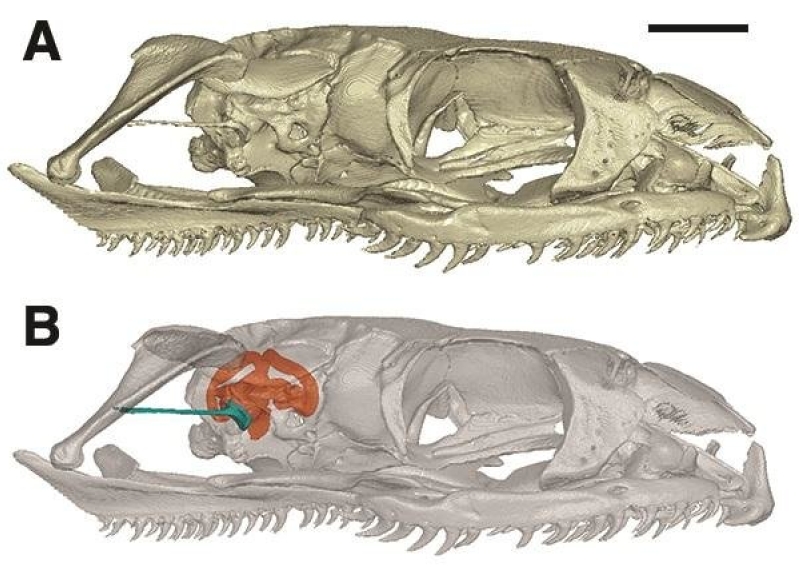
The famous animal figure from Garden of Eden evolved from it is today to wriggle through burrows, and not to live in the sea, according to a new study. The findings in a 90 million-year-old reptile fossil skull shed light on the evolutionary history of snakes.
Researchers from the University of Edinburgh compared the CT scans of the fossil to modern reptiles to know how snakes lost their legs. After a series of analysis, they found that ancient snakes used to live and hunt in burrows, making it beneficial for them to evolve into legless reptiles.
Furthermore, the result of the study clarified that snakes did not lose their limbs to live in the sea, as was previously suggested.
The researchers used CT scans to analyze the bony inner ear of Dinilysia patagonica, a 2-meter long ancient snake.
The bones in the inner ear of the snake control its hearing and balance. Scientists examined these bony canals and cavities to know the lifestyle of ancient snakes.
The researchers also made 3D virtual models of ancient snake's ear to compare that with modern lizard and snakes. Analysis showed that there is a distinctive structure within the inner ear of animals that actively burrow, which may help them detect prey and predators. This unique shape was not present in today's snakes that live in water or above the ground.
"How snakes lost their legs has long been a mystery to scientists, but it seems that this happened when their ancestors became adept at burrowing," said Hongyu Yi, co-author of the study from Edinburgh's School of GeoSciences.
The latest findings of snake are published in the journal Science Advances.
Other anatomical changes
Aside from being legless, snakes differ from lizards in having a highly mobile skull, an enclosed braincase and no external ear. The majority of studies about snakes say these animals were not created in their present form. It shows in the loss or reduction of their left lung.
Primitive snakes have two functioning lungs, with the left lung about half the size of the right. However, in the study of Colubridae snakes, it shows that its left lung has either disappeared or shrunk to a functionless nub.
Furthermore, there are differences between eye structure of lizards and snakes. Lizards can focus their eyes by contracting the large ciliary muscles. They focus on changing the lens diameter. On other hand, snakes focus their eye by using their enlarged iris muscles to move the whole lens forward or backward. They are adjusting their eye by focal length.







